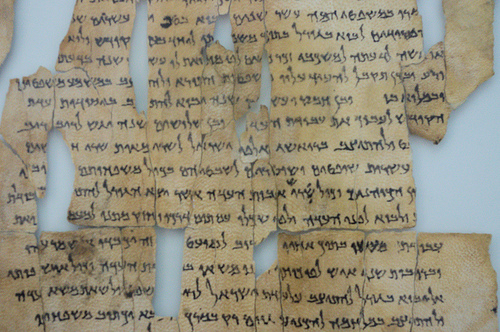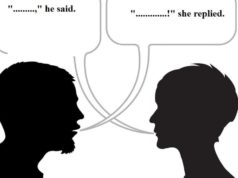I got very excited when I heard about the Dead Sea Scrolls coming to Fort Worth.
I’d heard and read about the world-famous discovery many times. For many reasons, not least of which is a love of the written word in all its forms, I wanted to see these ancient manuscripts for myself.
What does a 2,000-year-old piece of inscribed papyrus look like? What would the handwriting look like? I was in awe of the idea that a handwritten work could be preserved for so long and still be relevant. I can’t read my handwriting within 24 hours of scribbling something down.
For those not in the know, the Dead Sea Scrolls — first discovered in a series of West Bank caves in 1947 by Bedouin goat herders — represent a seminal moment for Christian and Jewish scholars. Upon study of the manuscripts, anthropologists realized that nearly the entire Old Testament was represented in the scrolls, a version about 1,000 years older than any other manuscript.
So it was with fascination that I paid for a trip into the exhibit of the Dead Sea Scrolls held at Southwestern Baptist Theological Seminary. I assumed, without really thinking about it, that this would be like any other museum exhibit: informative and objective.
I must have been an idiot.
The Christian bias was pervasive. And I’m not just talking about the exhibit guide’s tendency to describe everything as “neat” while discussing the oppression of Jews throughout the centuries. The tour was replete with references to Biblical characters and stories he didn’t bother to explain, assuming with a wink and a smile that everyone in the group of two dozen was in on the joke. Later, he not-so-subtly insinuated that the scrolls’ close similarity to today’s Bible proves something about the “truth” of Christianity.
Then there was the video.
The second segment of the exhibit was a short “documentary” film — shown in the seminary’s main chapel — that included interviews with its theologians and scholars. Little useful information was provided about the scrolls or their historical significance. However, the video does suggest that the discovery of the scrolls holds great religious significance in that they reveal the “truth and power of God’s word.” The video’s narrator asks the audience to “step through the illuminated doorway” to see the scrolls, at which point a spotlight painted a floral, rotating design on a nearby hallway.
Then I entered the doorway and finally got to see the scrolls, which were, without a doubt, very cool.
Perhaps some of you are thinking that these criticisms are off base given that the exhibit is held at one of the biggest seminaries in the country. What do I expect? Or maybe you think that this shouldn’t be surprising coming from an institution that bought more than 200 Chick-fil-A sandwiches to support the company’s CEO, who said the nation was “inviting God’s judgment” by trying to redefine marriage as anything but a union between a man and a woman.
Well, you’d be right, except that the seminary’s own advertisement for the exhibit attempts to draw secular visitors. After listing the words “Creationist, Atheist, Humanist” and a few others, a voice says: “Yes, this exhibit is for you.”
Either the people who put all this together don’t understand what it means to present an objective exhibit, or they are attempting to proselytize non-believers by luring them in with false advertising. It’s regrettable because there are few opportunities these days for the polarized groups of Christians and non-Christians to find common ground. This exhibit billed itself as a meeting of minds over mutual respect for the scrolls, but in taking sole ownership of these documents, the organizers of this exhibit failed to do that.
After all, this isn’t an issue of respect for the Bible. It’s fairly clear that no other words have had a bigger impact on the last two thousand years of human history than the endlessly translated Hebrew that inspired two of the world’s major religions.
Like the Egyptian hieroglyphs engraved on sarcophagi in museums around the world, the Dead Sea Scrolls should serve as a reminder of the endurance of spiritual faith in all its forms, of the lasting craftsmanship that existed long before machines, and of the rapturous power of language. None of these ideas are present in the seminary’s exhibition.
After two millenniums, these leathery manuscripts, which survived against all odds, are worth seeing for their own sake.
It’s disappointing that the seminary wants you to see it for theirs.













It’s like going to the White House web site to read bios of past presidents.
Of course you are right. When fundamentalist Christian seminaries buy up historical artifacts the intent is not to illuminate history. They do it as an investment in props to support their story. A story which is beyond archaeology because they already “know” the “truth.” Beginning from the position that one already knows the answers is the opposite of scholarship. And putting these presentations in a scholarly dress is insulting to thinking people. There is nothing about the Dead Sea Scrolls that comes close to validating the New Testament. If anything, they reveal the thinking of the people who Jesus would have really known in a way that was deliberatley covered up by New Testament writers who did not know Jesus in the first place. But that is an angle you won’t see covered at a Baptist Theological Seminary.
YALL ARE JUST MAD THAT YALL AINT GOT NO SWAGG #YOLO